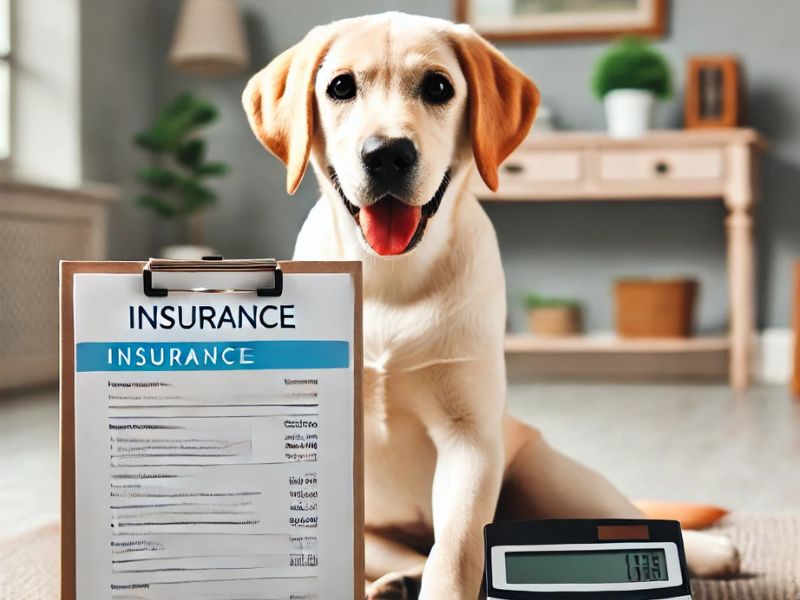Owning a pet is one of life’s greatest joys, but let’s face it—vet bills can be downright scary. Whether your dog needs surgery or your cat develops a chronic condition, pet insurance can be a lifesaver for your wallet.
But pet insurance premiums don’t stay the same forever. In fact, they increase every year. So, how much should you expect them to increase? Let’s dive into it.
Key Points:
- Pet insurance costs tend to increase annually, typically by 10% to 25%.
- Premiums are influenced by factors like your pet’s age, breed, and health condition.
- Rising veterinary costs and advanced treatments significantly impact annual price hikes.
- The type of plan you choose, such as comprehensive or accident-only coverage, also affects premium increases.
- Expert advice: Proactively compare providers and consider switching plans to manage rising costs.
What Is Pet Insurance and How Does It Work?
Pet insurance is essentially health insurance for your furry (or scaly) friend.
You pay a monthly or yearly premium, and in return, your insurance provider helps cover unexpected vet bills, from accidents to illnesses. Some plans even cover routine check-ups and vaccinations.
Sounds simple, right? Well, it is, until you notice your premiums going up every year. That’s when you start scratching your head, wondering what’s driving the increase.
Does Pet Insurance Increase Every Year?
Yes, almost all pet insurance plans experience annual price increases. Think of it like renewing your car insurance or home insurance—it’s common for the rates to go up slightly each year.
The main difference? With pet insurance, the hikes are often tied directly to your pet’s health risks and the costs of veterinary care in your area.

According to industry data, the average annual increase is between 10% and 25%, though some pet owners report hikes as high as 40%, particularly for older pets or specific breeds.
This steady increase can be frustrating, but understanding why it happens helps ease the sting.
Why Do Pet Insurance Costs Increase Over Time?
For pet insurance, the reasons are often tied to your pet’s age, inflation, and the ever-growing costs of veterinary care. Let’s not forget that as pets age, their health risks increase—just like us humans.
How Much Does Pet Insurance Typically Increase Annually?
On average, pet insurance premiums increase by 10% to 25% annually, depending on various factors. For instance:
- Younger pets may see smaller hikes, closer to the 10% range.
- Older pets or those with chronic conditions might experience steeper increases, sometimes exceeding 25%.
To put this in perspective, if you start with a $30 monthly premium, you could be paying closer to $37 or more after a year or two. Over time, these hikes add up, especially if you stick with the same provider.
“Pet insurance is a smart investment, but owners should be aware that premiums will rise as their pets age. It’s important to weigh the cost of premiums against potential vet bills. Even with increases, most pet owners still save money in the long run.” Dr. Sarah Mitchell, Veterinarian
Factors Influencing Pet Insurance Price Hikes
1. Your Pet’s Age
Age is the biggest culprit behind premium increases. Think of it like car insurance: a new driver is risky, but a pet approaching their golden years is almost guaranteed to rack up higher vet bills.
Most insurers raise premiums as your pet ages, even if they’re perfectly healthy.

2. Veterinary Costs
Have you noticed how vet care seems to get more expensive every year? Advanced treatments like MRIs, specialized surgeries, or even cutting-edge cancer treatments for pets come at a hefty price.
Insurance companies adjust their rates to keep up with these rising costs.
3. Breed and Pre-Existing Conditions
Some breeds are more prone to health issues. For example, Bulldogs often struggle with breathing problems, while larger breeds like Great Danes are at higher risk for joint issues.
If your pet belongs to a high-risk breed or has pre-existing conditions, expect a steeper premium hike.
How to Handle Rising Costs
1. Review Your Coverage
Take a close look at your policy. Do you really need everything it offers? For example, dropping optional extras like dental coverage can help lower premiums.
2. Consider a Higher Deductible
A higher deductible means you’ll pay more out-of-pocket for claims but less in premiums. It’s a trade-off worth considering if your pet is generally healthy.
3. Compare Providers Annually
Just because you started with one insurer doesn’t mean you have to stick with them. Shopping around can save you hundreds of dollars.
4. Focus on Preventive Care
Keeping your pet healthy can reduce the likelihood of claims, which may help slow premium hikes. Regular exercise, a balanced diet, and routine check-ups go a long way.
Which Plans Experience Price Increases?
Not all pet insurance plans are created equal, and the type of plan you choose can impact how much your premiums increase. Here’s a breakdown:
1. Comprehensive Plans
These plans cover everything from accidents and illnesses to preventive care and hereditary conditions. They typically see the highest annual increases because they offer the broadest coverage.

2. Accident-Only Plans
Accident-only plans are more affordable and tend to have smaller annual hikes. However, they don’t cover illnesses or routine care.
3. Time-Limited Policies
These policies cover conditions for a specific period, like 12 months. While they may have lower premiums initially, increases are common as your pet ages or if claims are made.
4. Lifetime Policies
Lifetime plans are the most robust option. They cover ongoing conditions for your pet’s entire life but often come with significant annual increases, especially for older pets.
Comparing Pet Insurance Providers
Not all pet insurance companies are created equal. Some providers are notorious for annual hikes, while others are more reasonable. It pays to read the fine print and compare plans carefully. Look at:
- Coverage limits
- Reimbursement percentages
- Deductibles
- Customer reviews
You’d be surprised how much you can learn from other pet parents’ experiences!
Conclusion: Making the Best Decision for Your Pet
When it comes to pet insurance, there’s no one-size-fits-all answer. Yes, premiums will increase every year, but the peace of mind you get knowing your furry friend is covered? Priceless.
The key is to stay informed, compare options, and find a plan that works for your budget and your pet’s needs.
FAQs
1. Why does pet insurance increase with age?
As pets grow older, they’re more likely to develop health issues, leading to more claims. Insurers adjust rates to account for this increased risk.
2. Are there pet insurance providers with no annual increases?
It’s rare, but some providers offer flat-rate plans. However, these often come with limited coverage or higher upfront costs.
3. Can I switch pet insurance providers to avoid hikes?
Yes, but be cautious. Switching providers might mean losing coverage for pre-existing conditions.
4. Do all pets need insurance?
Not necessarily. If you can comfortably afford unexpected vet bills, you might not need insurance. However, it’s a great safety net for most pet owners.
5. What happens if I don’t renew my pet insurance?
If you let your policy lapse, you might struggle to get coverage later, especially for any conditions diagnosed during the gap.

Pingback: Does Pet Insurance Cover Euthanasia? End-of-Life Care Costs